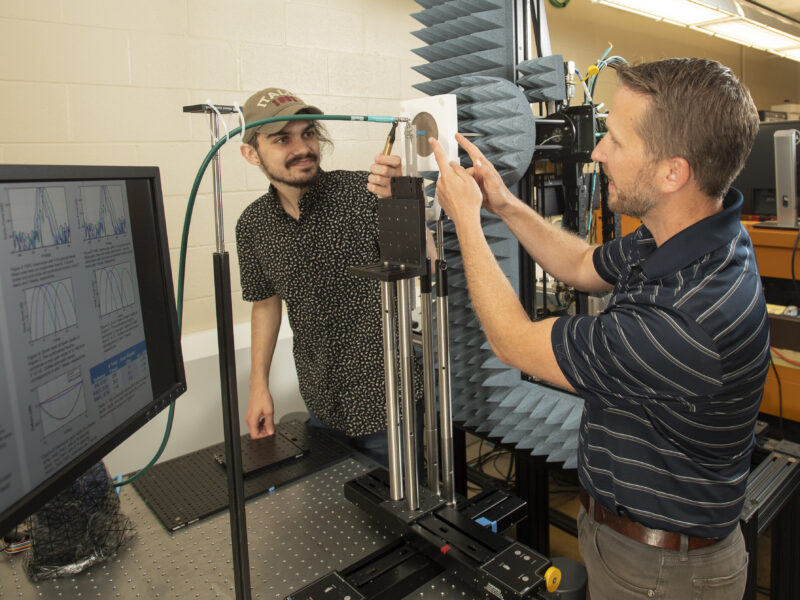Phased Arrays and Lenses for Low-Power 5G MMW Communications

Principal Investigator: Professor Chisum
AWaRE REU Researcher: James Ernst, Valparaiso University
Other Contributors: Nicholas Estes, Nicolas Garica, and Wei Wang
Project Summary:
Phased arrays have proven to be an enabler for high-performance communications and sensing in the sub-6 GHz bands. They enable high-gain links to individual remote radios which can be tracked in space to achieve high data rates, enable spatial reuse, and even provide location-aware applications. This technology was initially developed in the defense sector at great cost and with significant power consumption. However, commercial-off-the-shelf (COTS) DACs and ADCs have seen a dramatic reduction in cost and power consumption and a wide range of integrated RF components in the sub-6 GHz bands have become available. These trends have enabled the technology to transition to the commercial sector with great success.
More recently the same technology was transitioned to the millimeter-wave (MMW) bands (>30 GHz) to enable 5G MMW communications with data rates beyond 1 Gbps. Unfortunately, the technology (data converters and radio components) did not scale well so the 5G MMW phased arrays consume extremely high power. In fact, the first generation of 5G MMW-enabled mobile phones were only capable of operating at Gbps rates for ~10 minutes before the battery was drained.
Instead of taking technologies that worked well at low-frequencies and moving them up in frequency, an alternative approach is to take technologies which natively work at high frequencies such as lens antennas, and modify them to provide the desired functionality (high-speed beam-scanning and multi-beam apertures) for 5G MMW.
The purpose of this research project is to explore the length to which switch-beam lens antennas can provide the most important features and capabilities of a phased array but at a fraction of the cost and power. This project will build off of the MMW lens antenna demonstrations from the PIs research group and will include theoretical electromagnetic antenna modeling as well as linear systems analysis (especially beam-forming theory and beam-synthesis methods from field theory). In addition, the student will use the PI’s measurement laboratory and near-field antenna range to demonstrate phased-array-fed lens antennas using state-of-the-art beamformer integrated circuits.
Finding:
5G and satellite-based internet systems both types of systems rely upon beam-scanning antennas while in the millimeter-wave bands to allow target tracking and to close links in real time. The traditional solution for antennas with beam scanning capabilities is a phased array that combines potentially 1000’s of antenna elements, each element has its own active electronics, so synthesizing beams is very costly and consumes large amounts of power. In our research, we are exploring hybrid solutions of widely spaced antenna arrays combined with low-cost lens antennas to achieve similar performance as a traditional phased array, but at a fraction of the active elements. In addition, in our design, less than 10% of the elements are active at a time which dramatically reduces dynamic power consumption. Our main objective is to characterize a hybrid lens/array system to find the maximum performance for the number of elements used at different spacings. We have measured the radiative electric far-field for each antenna feed in a virtual array using a planar near-field scanner for our hybrid system and 27 GHz and analyzed the possible beams for such a system. The work demonstrates that this method reduces the number of feeds by more than a factor of two while still being able to produce acceptable beam scanning capabilities. Leaving us with a promising method for commercial applications which require millimeter-wave beam scanning.

